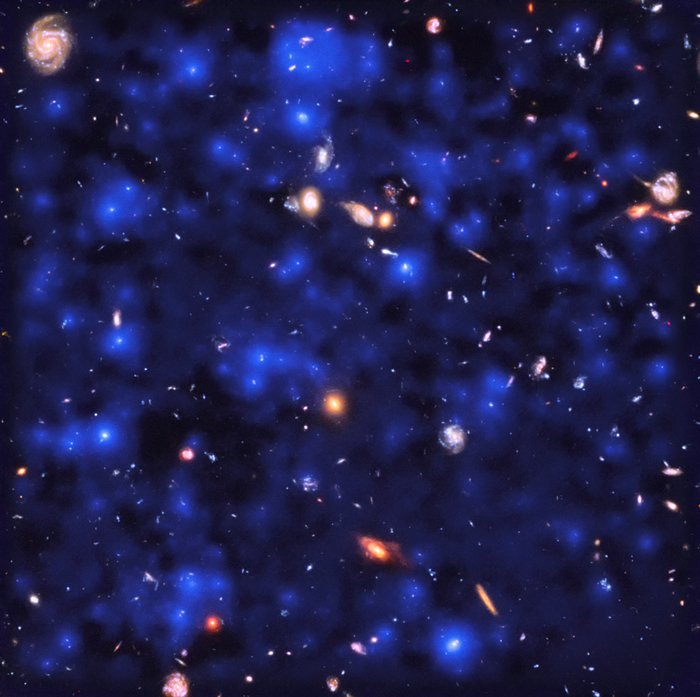Pahoittelumme! Tämä sivu ei ole vielä saatavilla haluamallasi kielellä, joten näytämme sen sijaan alkuperäisversion.
A Universe Aglow
Deep observations made with the MUSE spectrograph on ESO’s Very Large Telescope have uncovered vast cosmic reservoirs of atomic hydrogen surrounding distant galaxies. The exquisite sensitivity of MUSE allowed for direct observations of dim clouds of hydrogen glowing with Lyman-alpha emission in the early Universe — revealing that almost the whole night sky is invisibly aglow.
Oikeudet:ESA/Hubble & NASA, ESO/ Lutz Wisotzki et al.
Kuvasta
| Tunnistus: | eso1832a |
| Tyyppi: | Havainto |
| Julkaisupäivä: | 1. lokakuuta 2018 17:00 |
| Vastaavat julkaisut: | eso1832 |
| Koko: | 2154 x 2145 px |
Kohteesta
| Tyyppi: | Early Universe : Cosmology : Morphology : Deep Field |
| Constellation: | Fornax |
| Kategoria: | Cosmology |
Taustakuvat
Koordinaatit
| Position (RA): | 3 32 38.65 |
| Position (Dec): | -27° 46' 44.31" |
| Field of view: | 1.07 x 1.07 arcminutes |
| Suuntaus: | Pohjoinen on 0.0° vasen pystysuuntaan nähden |
Värit ja suotimet
| Kaista | Aallonpituus | Teleskooppi |
|---|---|---|
| Optinen B | 435 nm | Hubble Space Telescope ACS |
| Ultravioletti Lyman-alpha | 121 nm | Very Large Telescope MUSE |
| Optinen i | 775 nm | Hubble Space Telescope ACS |
| Optinen V | 606 nm | Hubble Space Telescope ACS |
| Optinen I | 814 nm | Hubble Space Telescope ACS |
| Infrapuna Z | 1.05 μm | Hubble Space Telescope WFC3 |
| Infrapuna H | 1.6 μm | Hubble Space Telescope WFC3 |
| Infrapuna J | 1.25 μm | Hubble Space Telescope WFC3 |

